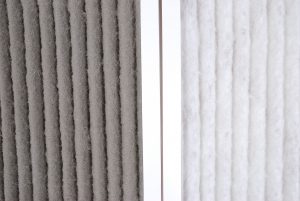Massive wildfires continue to devastate the west coast and are expected to increase as we enter fire season. These wildfires cause millions of dollars in damage, neighborhood displacement, and emotional distress for property owners and occupants. In the wake of this destruction, many property owners, insurance companies, and neighboring residents are looking for answers. Has my home been impacted? What needs to be cleaned? Is it safe for me to clean it myself?
At Forensic Analytical Consulting Services (FACS), our passion is protecting the health of people, families, communities and the environment through assessment, education and prevention. As such, we hope you find the following information and resources beneficial.
What is smoke composed of?
Wildfire smoke is made up of a complex mixture of gases, vapors and fine particles (i.e., soot) produced when wood and other organic matter burn. Among the substances found are gases from partially burned hydrocarbons (e.g., carbon monoxide) and potentially toxic or irritant volatile organic compounds (e.g., acrolein, formaldehyde).
When evaluating the impact of a property from a nearby wildfire, fire and smoke-related particulates are the most prevalent indicators. During assessment of wildfire impact, these combustion-related particulates are typically the easiest to visually see, collect, analyze and characterize. Fire and smoke-related particulates are categorized as char, ash, or soot:
- Char is a partially burned piece of material that can be identified by morphology, color, relative opacity, fracture pattern, structure, and other characteristics.
- Ash is the leftover residue following complete combustion.
- Soot is a black carbonaceous substance produced during incomplete combustion.
How and when should my home be cleaned?
The level of cleaning is dependent on the level of impact. However, in general, the first steps 
Odors are best addressed through cleaning or disposal of contaminated material. Products that purport to “eliminate” odors frequently only mask one odor with another, and in doing so contribute additional chemicals to the indoor air. The use of ozone to eliminate odors in buildings is rarely recommended. Ozone masks odors by deadening the sense of smell, can damage building materials, and can react with other compounds to produce toxic byproducts. The Environmental Protection Agency has a document, “Ozone Generators that are Sold as Air Cleaners: An Assessment of Effectiveness and Health Consequences” that provides additional information on ozone.
Occupants returning to buildings or fire damaged areas are likely to notice odors and experience health symptoms from contaminants in the outdoor environment. This frequently leads to increased concerns about indoor air quality in general, even to agents not associated with fires. Prompt and competent responses to these concerns can frequently prevent them from growing into widespread issues or claims.
In the wake of previous fire events, FACS has been asked by clients to support recovery efforts in a number of ways, including:
- assessing impact and making clean-up recommendations
- conducting sampling/assessment to verify acceptable clean-up
- real-time monitoring of particulates and carbon monoxide
- surveying destroyed or damaged structures for asbestos, lead and other potential hazards
- consultation on resolving indoor air quality concerns, including general training and education
- litigation support
We are standing by to provide our services as needed or to simply answer your questions. For additional information call FACS at (888) 711-9998.